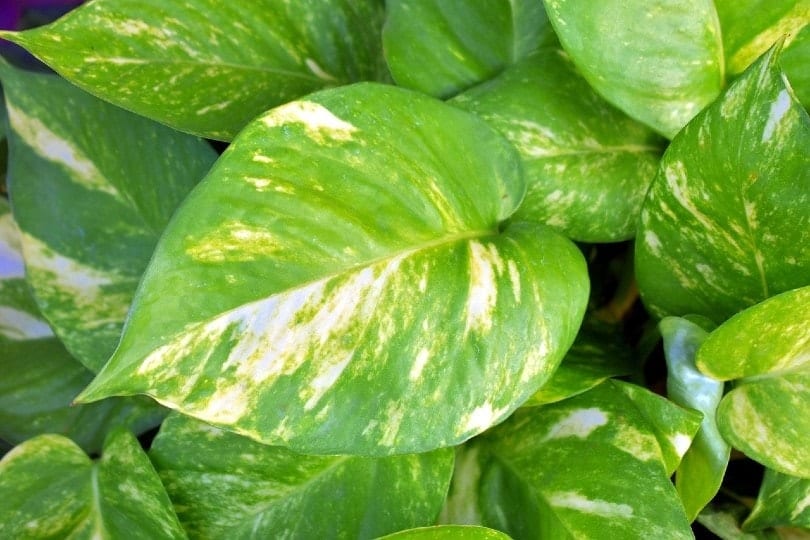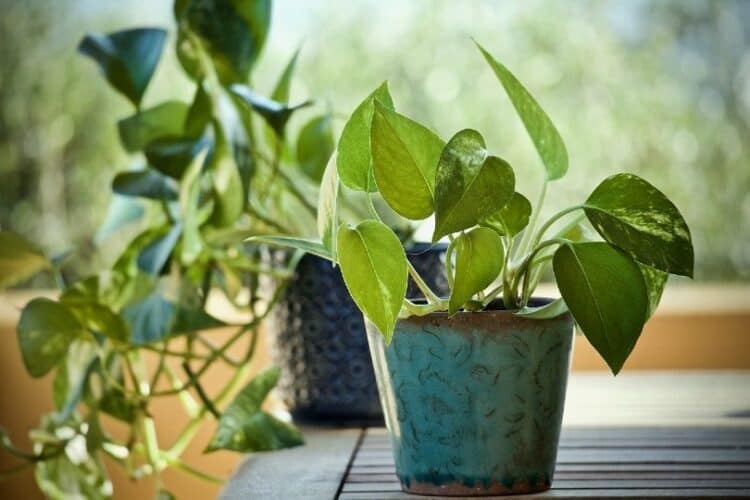Cats can be curious about our houseplants and making a pet-safe home might mean picking and choosing what plants to keep. Pothos plants are on the danger list because they can be very toxic to cats. However, if your cat has eaten a pothos, you don’t need to panic. Pothos poisoning is serious, but it is usually treatable. Contacting a vet quickly will help you protect your cat in a worst-case scenario.
What Is a Pothos Plant?
If you only have one houseplant, it might be a pothos. These plants are common beginner plants because they are so easy to care for and attractive. They are also common in offices and other public spaces.
These plants have long tendrils with smooth, heart-shaped leaves. The leaves are thick and waxy and might have splashes of bright gold or white. They are often used because they are drought resistant and don’t need direct sunlight, making them perfect for indoor plants, but their leaves and stems contain calcium oxalates that are poisonous to cats, dogs, and many other animals. If you have a cat, it is best to keep your pothos far out of reach or get rid of it altogether.
Signs of Pothos Poisoning
Pothos leaves and stems produce tiny crystals called calcium oxalates that are poisonous. If your cat chews or nibbles on the plant’s leaves and stems, these crystals will cause stinging, irritation, and discomfort. This pain is usually immediate, so most cats aren’t in danger of ingesting the plant—one nibble is enough to turn them off. However, both chewing and ingesting the plant can cause severe symptoms. Here are some of the signs you might see:
- Irritated lips and mouth
- Swelling around face, mouth, or throat
- Difficulty breathing
- Pawing at face or mouth
- Difficulty swallowing
- Refusal of food or drink
- Drooling
- Vomiting
In many cases, pothos poisoning is painful but not life-threatening, with the main symptom being irritation that will subside in time. However, there are two reasons why poisoning can be fatal. The first is if swelling is severe enough to close off your cat’s airway, leading to suffocation. Poisoning can also be much more serious if oxalate crystals reach your cat’s stomach, where they can damage the stomach lining and lead to severe complications. For this reason, poisonings should be taken seriously.

Treatment for Pothos Poisoning
If you see your cat munching on pothos or showing signs of poisoning, you should always contact your vet for treatment. Treatment is especially urgent if you see vomiting or difficulty breathing.
Your vet has many treatment options for pothos poisoning. The most common course of action is to flush out your cat’s mouth and stomach to remove all traces of poison. From there, your vet might give your cat additional treatments to soothe symptoms. An antihistamine like Benadryl can help with swelling and prevent suffocation. These medications should only be administered by a vet because cats have a higher risk of complications than humans.
If your cat has been vomiting, your vet might give medication or foods designed to soothe the stomach and protect its lining. An IV might also be needed to ensure that your cat is hydrated. Ultimately, vet intervention is very effective in treating pothos poisoning.
Last Thoughts
Pothos poisoning might be treatable, but it is also painful and dangerous. It’s easy to see why many pet owners choose to remove all dangerous plants from their house to protect their pets. There are many other easy-to-care-for plants like spider plants or rattlesnake plants that are not toxic to pets. But if you don’t find out about pothos poisoning until it happens to your cat, remember that it’s one of the more treatable conditions.
Featured Image Credit: Pixabay














